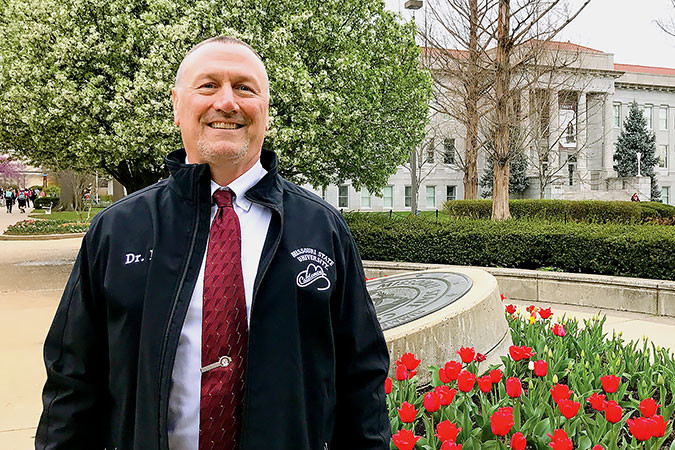The program recently changed its name to the William H. Darr College of Agriculture. What does that mean for the program, previously a school of agriculture?
You wouldn’t think that one word means a lot, but it really does in an academic setting. There is the prestige, No. 1. Looking at it from a domestic standpoint, it fits well within the structure.
Usually, a school is something that is a little bit out of the norm, and it is housed under the umbrella of a college. Where we were as a school, agriculture and natural resources is not out of the norm. From a department to a school, we were growing and it warranted that, but the growth continued and was much more visible. That translated into increased enrollment and activity at the graduate level.
What does it take to make that move – is there a tipping point?
It’s a combination of everything: Enrollment, alumni support, donations, endowments, revenue generating potential, faculty numbers and programs all come into play. We’ve just been rolling on all those things. When I interviewed and accepted the position, it was as director for the school of agriculture.
During the interview, I asked about moving to a college. It was very much on the radar of the provost and the president. Within four months of accepting this position, we made the move and the board of governors voted unanimously. My position then went from director to dean.
The college has doubled its majors in the past five years. What is driving that growth?
I think just the visibility. When it was pulled out to be a stand-alone school, it was much more visible. Some of the promotion that was taking place too, with the things we could offer from an academic standpoint, was starting to get more noticed. Our students were graduating and were well trained. The word gets out, and it snowballs. We went from just under 400 students to 800 students in five years.
That’s undergrad. What about the graduate program?
Our graduate program went from struggling to try and talk people into coming here to now we have to turn people away. We have so many people interested in graduate school, not only domestically, but also internationally. We are talking to a student from Japan next month. The designation as a college helps with that, it’s universally recognizable.
The college recently received two new endowments from the Darr family. What will those fund?
One is designed to help support graduate programs. It is written in a broad fashion to support graduate assistantships, equipment, travel, publication costs and whatever we need for that program. The second endowment is for infrastructure maintenance, management and overall operational costs.
The college is spread across multiple areas and campuses. How do you keep it cohesive?
I run the roads a lot. Yesterday, I was down in Mountain Grove. I try to spend each Monday there. I left there and burned the roads back up to the Shealy Farm at 6 p.m. for a Farm Bureau type meeting. It is a challenge when you have five different farms and two campuses within the college.
The Kindrick family recently donated an 80-acre farm by the airport. What’s planned for the land?
It will be mostly cultivated land for crop production. All of the other farms we have are mainly forage and cattle operations. This will be the first farm for crop production. It provides us the opportunity to do research, outreach work in crops and work with different commodity groups.
How do you convert a farm like that?
It’s a process, a gradual process. The land had been leased out, so the cultivated land wasn’t overgrown too bad. We did a bunch of brush hogging. There is an old home that I’m not sure if we will try to restore or condemn it. There are a couple barns that will stay. About 65 acres right now are cultivated for crops. That initially comes out of the college budget, but a lot of time we will work collaboratively with commodity groups.
There will also be grants and some of the material on the farm now – say timber – could be sold and invested back. Within short order, it should sustain itself. Over time, say a 12-year window, going from where it was, you’re going to put in around $150,000 ballpark to keep it looking good.
The Mountain Grove campus is expansive, but little known. What does it comprise?
It’s not only the campus, but also the Missouri State Fruit Experiment Station. We have a vineyard there, peaches, pears, apples, small berries like raspberries, blueberries, pecan trees, black walnut trees. We are doing a study with Hammons (Products Co.) right now. There is lots of research. We have resident research scientists on campus. There are state-of-the-art, DNA-based labs to test things like diseases of grapes and create new varieties. Plus, we have the winery and a distillery that produces moonshine. The campus is just under 200 acres.
Ronald Del Vecchio is dean of Missouri State University’s William H. Darr College of Agriculture. He can be reached at RPDelVecchio@missouristate.edu.
